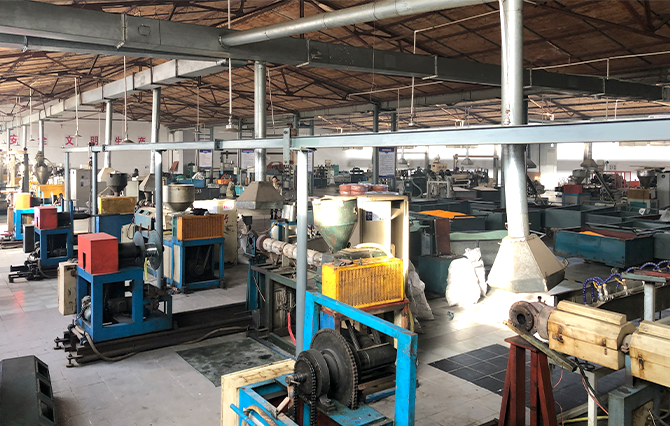Comparison of PVC Air Hose and Rubber Hose Performance and Durability
PVC Air Hose vs. Rubber A Comprehensive Comparison
When it comes to selecting air hoses for various applications, two of the most popular materials available in the market are PVC (Polyvinyl Chloride) and rubber. Both types of hoses have their unique characteristics, advantages, and disadvantages. Understanding these differences is crucial for making the right choice for your specific needs, whether you are a professional in the construction industry, a home DIY enthusiast, or simply seeking a solution for air-driven tools.
Composition and Durability
PVC air hoses are made from polyvinyl chloride, a synthetic plastic polymer. This type of hose is known for its lightweight nature, flexibility, and resistance to a range of chemicals and solvents. On the other hand, rubber hoses are typically made from natural rubber or a blend of synthetic rubbers. Rubber hoses are generally more durable, providing greater resistance to cuts, abrasions, and punctures.
While PVC hoses can endure some degree of wear and tear, they may not perform as well as rubber hoses in heavy-duty applications. This is particularly important if the hose will be exposed to harsh conditions or materials that could damage it. However, PVC hoses have improved significantly over the years, with higher quality formulations now available that increase their durability.
Flexibility and Handling
When it comes to flexibility, PVC hoses are often easier to handle due to their lightweight design. They tend to coil easily and are less likely to kink or tangle during use. This can be a big advantage when you are working in tight spaces or need to move the hose frequently.
Rubber hoses, while generally heavier, offer excellent flexibility as well, particularly in colder temperatures. Unlike PVC hoses, which can become stiff and less adaptable in low temperatures, rubber hoses maintain their flexibility, making them a reliable choice in various environmental conditions. This characteristic ensures better maneuverability and easier operation, especially in outdoor settings where temperatures can fluctuate.
Temperature Resistance
pvc air hose vs rubber

Temperature resistance is another key factor to consider when choosing between PVC and rubber hoses. PVC hoses typically can handle a temperature range of -20 to 150 degrees Fahrenheit (-29 to 65 degrees Celsius). However, they may lose some flexibility and become brittle in extremely cold temperatures.
Rubber hoses generally have a wider temperature tolerance, often managing extreme temperatures ranging from -40 to 200 degrees Fahrenheit (-40 to 93 degrees Celsius). This makes rubber hoses more versatile for applications that involve extreme heat or cold, ensuring reliable performance over a broader spectrum of conditions.
Cost-Effectiveness
One of the defining characteristics of PVC air hoses is their cost-effectiveness. PVC hoses are generally cheaper to produce and purchase, making them an attractive option for budget-conscious consumers. They can be especially suitable for light-duty applications or for users who do not require heavy-duty performance.
Rubber hoses, while more expensive, often provide better longevity and performance in demanding situations. For professionals who require reliable equipment that can withstand rigorous use, investing in rubber hoses can lead to long-term savings by reducing the frequency of replacements.
Applications
Both PVC and rubber air hoses can be used in various applications, including air compressors, pneumatic tools, and spray painting. PVC hoses are commonly found in home workshops, light industrial applications, and gardening. Conversely, rubber hoses are favored in professional settings or heavy-duty environments, such as construction sites and industrial manufacturing.
Conclusion
In summary, the choice between PVC and rubber air hoses ultimately depends on your specific needs and applications. PVC hoses offer flexibility, lightweight handling, and cost-effectiveness, making them suitable for light-duty tasks. Rubber hoses, on the other hand, excel in durability, temperature resistance, and handling under extreme conditions, making them ideal for heavy-duty and professional use. Understanding these variables will help you make an informed decision, ensuring that your air hose functions efficiently for your particular requirements.
-
Top Quality Oxy Acetylene Hoses for Sale Fit for Welding DemandsNewsJul.28,2025
-
The Future of Pneumatic Air Tubes in IndustryNewsJul.28,2025
-
Superior and Reliable LPG Hose Pipe Solutions for Every NeedNewsJul.28,2025
-
Exceptionally Durable and Versatile Premium Braided PVC TubingNewsJul.28,2025
-
Best Adapters for Connecting Garden Hose to PVC Pipe ConnectionsNewsJul.28,2025
-
The Essential Role of LPG Hoses in Safe and Efficient Gas DistributionNewsJul.16,2025














